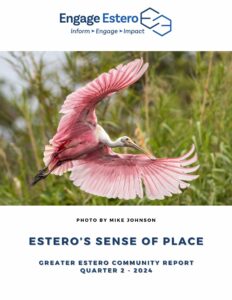 BikeWalkLee Column ‘Go Coastal’
BikeWalkLee Column ‘Go Coastal’
The News-Press, December 16, 2021
by Ken Gooderham
Just because the days are getting shorter doesn’t mean your lifespan has to do the same.
As is often the case as winter and season converge, there has been a spate of cyclist and pedestrian deaths on Southwest Florida roadways. (There’s been plenty of fatalities not involving biking or walking, but that’s for another discussion.)
Many of these bike/ped fatalities occurred once the sun went down, a chronic problem exacerbated by the dwindling amount of daylight this time of year. (For the record, our shortest day comes on Dec. 21, the Winter Solstice, with 10.5 hours of daylight.)
What can be done to make conditions safer for bikers and walkers, particularly at night?
First, cyclists and pedestrians need to take steps to make themselves safer… even if they aren’t at fault otherwise. As the bromide goes: Being right doesn’t matter when you’re dead.
What helps make you safe when biking or walking?
● See and be seen: This means lights galore, bright colors, reflective materials and anything else that helps you stand out and get noticed by motorists.
On your bike, have lights front (white) and back (red), more than one each if possible – since you need to see (as in where you’re going) as well as be seen). Flashing lights help you stand out from the night scenery, as does anything that reflects light (particularly if it shows movement as well, since that often grabs the eye of drivers).
On foot? The same things apply… lights to show you’re there (as well as show you the path ahead), bright colors and reflective materials.
● Obey the rules, even if others don’t: When visibility is limited is not the time to act erratically or dangerously. On your bike, ride with traffic so drivers approaching the roadway have a better chance of noticing you (since they’ll be looking for oncoming traffic, you want to act like that). Stop at intersections, particularly when there’s other vehicles involved. Ride consistently and predictably – no weaving, darting into traffic or sudden stops.
If walking, walk facing traffic so you can see the behavior of approaching vehicles in time to take evasive action. If possible, cross roadways at intersections or crosswalks, when (in theory) drivers should be paying more attention to that possibility. And even though all other traffic is supposed to yield to you, don’t act like you expect that until you see them giving you the right of way.
● Bike or walk defensively: You have a lot more to lose, so it behooves you to pay a lot more attention on the night-time roadways.
If you have that option, look for roads with room for every road user – ones with shoulders, bike lanes or sidewalks. Similarly, well-lighted roads give you a better chance of being seen overall. And if you can only get one of the two– space or lights – that’s still better than “none of the above.”
When on the move, assume the worst of your fellow road users… sadly, you usually won’t be disappointed. But don’t assume that drivers can see you, will stop for you and can avoid you. They can’t, they won’t and they don’t.
Suffice it to say that ALL road users should avoid being under the influence. Driving drunk is a recipe for disaster, but biking or walking under the influence is not far behind. Anything that impairs your judgment and response time is a bad idea, whatever your mode of transportation.
The burden shouldn’t have fall exclusively on cyclists and pedestrians when it comes to making roads safer. Drivers should step up their game to ensure safer streets, especially since they have the deadlier vehicle under their control. And road planners and local officials also have a role to play, both to design and build safer roadways, upgrade existing ones and working with local communities and citizens to improve those streets with chronic safety issues. Just because you don’t drive doesn’t mean you don’t matter.
Ultimately, though, cyclists and pedestrians have the most to lose from unsafe streets… so they should have the most incentive to strive for safer conditions.
NOTE: Don’t take a holiday from getting outside this time of year, particularly if you’re gathering with family and friends for the first time in a while. Going for a walk is something all ages and fitness levels can do – and do together.
Getting on each other’s nerves? Then get out the door and go for a walk… and leave the politics, family drama and holiday craziness behind, if only for a little while.


